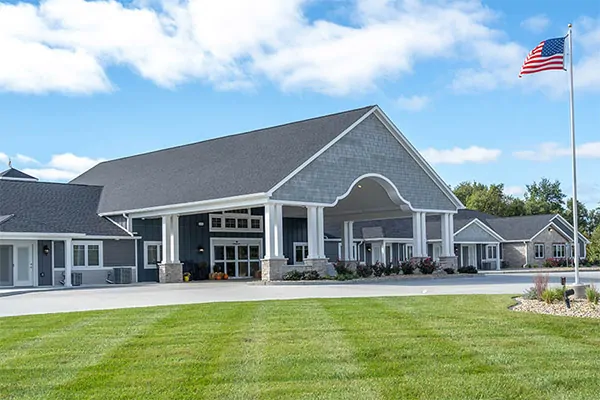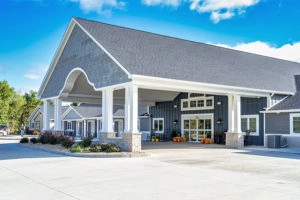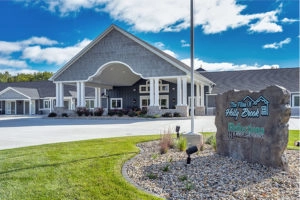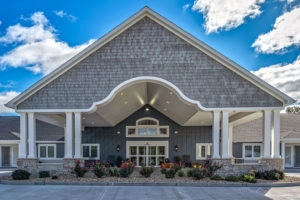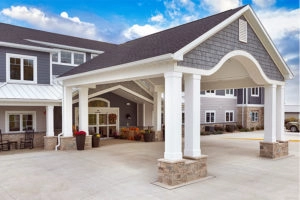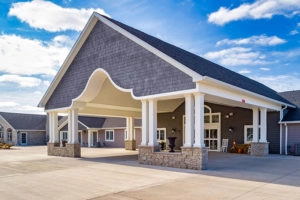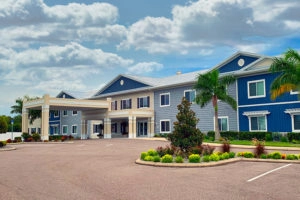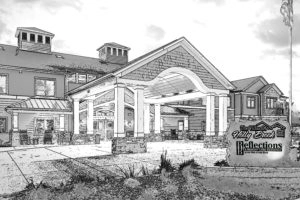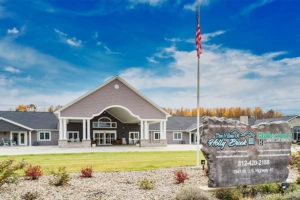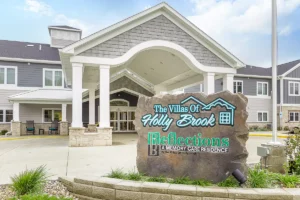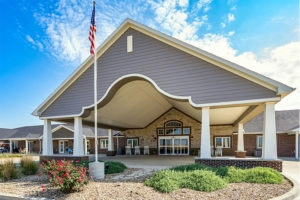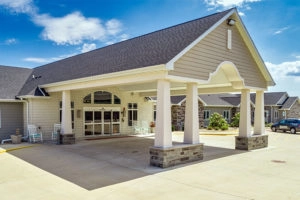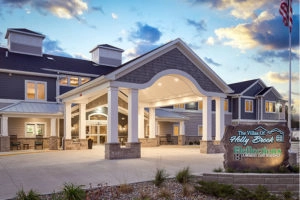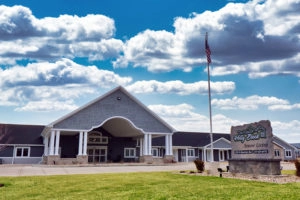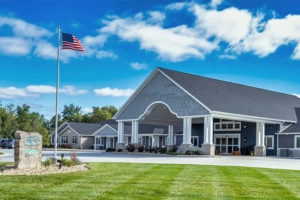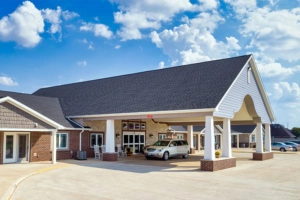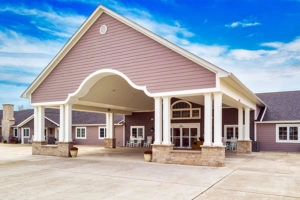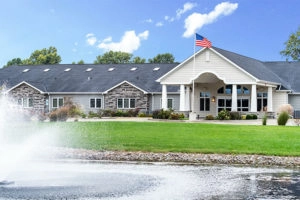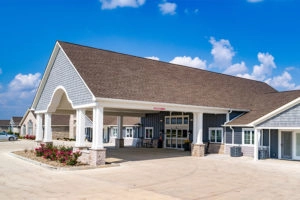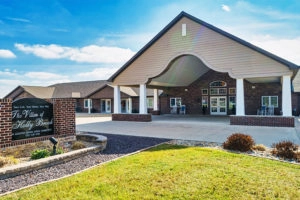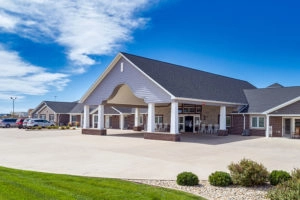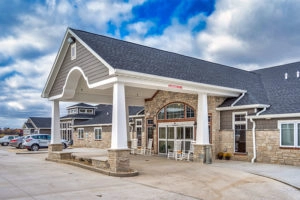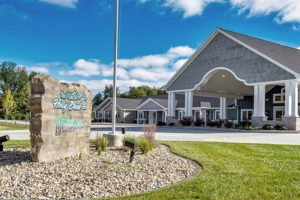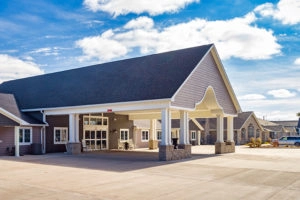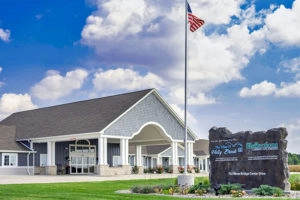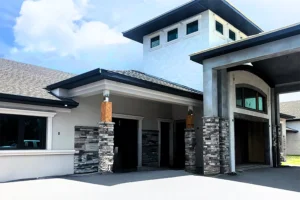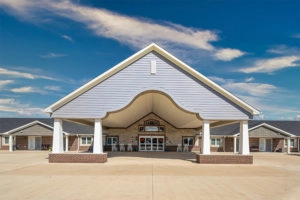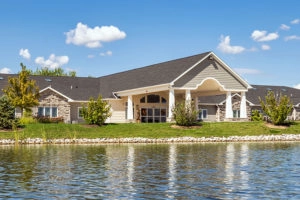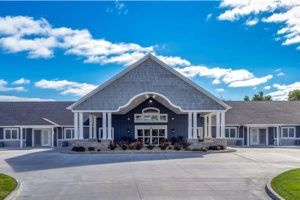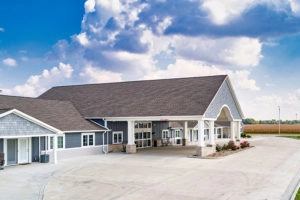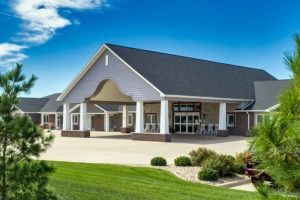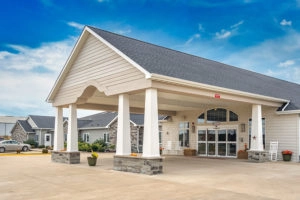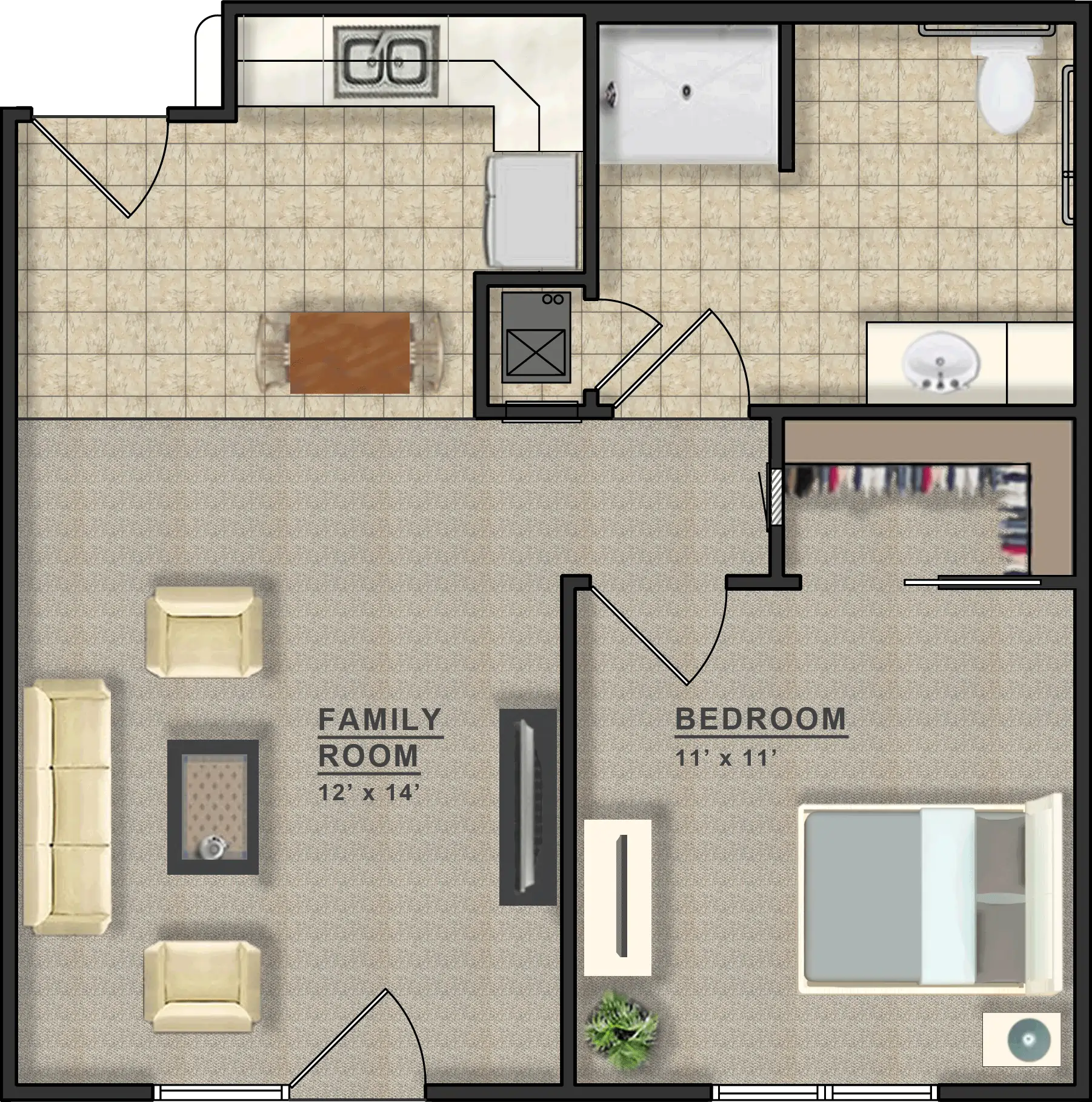SENIOR LIVING
6 Signs That It’s Time to Consider Senior Living
- Villas of Holly Brook
- January 1, 2024
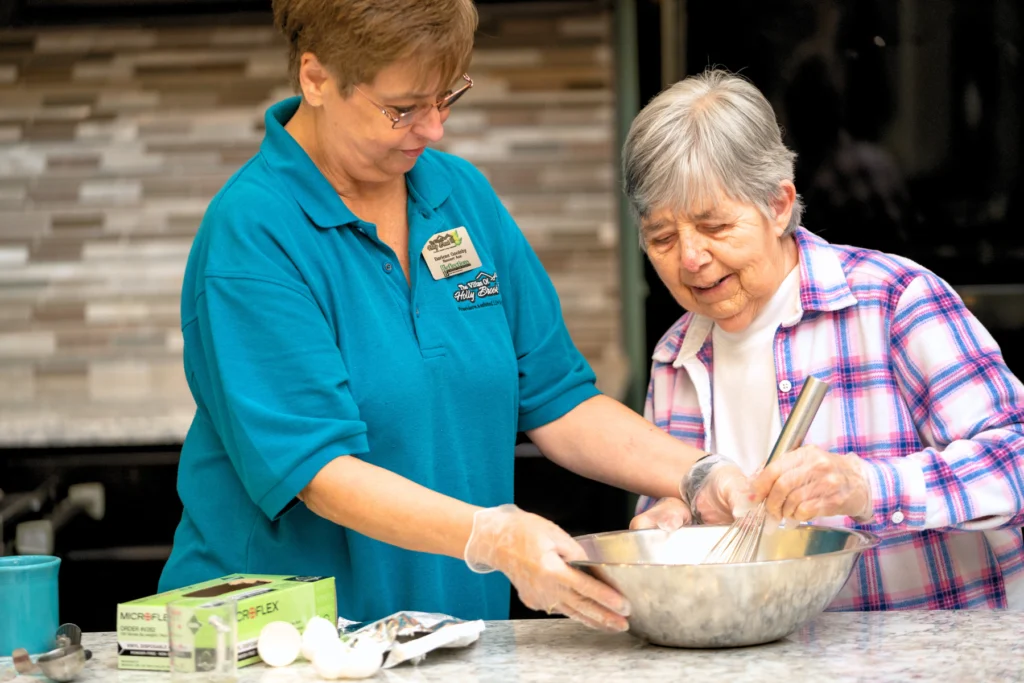
As the holiday season winds down, it marks a moment to reflect and often signals the start of more meaningful and, at times, challenging conversations. One of the most significant discussions to have during this time is whether it’s time to consider assisted living for aging parents or loved ones. In this blog post, we’ll explore the signs that indicate it might be the right moment to start looking into assisted living, focusing on the importance of understanding your loved one’s evolving needs.
What are Senior Living Communities?
So what are senior living communities and what do they offer? Senior living communities are residential communities designed to cater specifically to the needs and preferences of seniors, typically age 55 and above. These communities offer a range of housing or apartment options, including independent living, assisted living, and memory care, allowing seniors to choose an arrangement that makes sense with their level of independence and health requirements. One of the primary purposes of senior living communities is to provide a supportive and age-appropriate environment that enhances the quality of life for seniors.
These communities offer many benefits for seniors. Firstly, they foster a sense of community and social connection, addressing the potential isolation that many seniors may experience while living alone. Residents have the opportunity to engage in various activities and programs, encouraging friendships and a supportive network. Additionally, senior living communities often provide convenient access to healthcare services, ensuring that residents can easily access medical care and assistance with daily activities if needed. The communities are also designed with the specific needs of seniors in mind, incorporating features such as handrails, easy accessibility, and amenities that promote a healthy and active lifestyle. Overall, senior living communities play a crucial role in promoting the well-being, social engagement, and safety of older adults as they transition into a new phase of life.
Want a deeper understanding of the different senior living options?
6 Signs That It’s Time to Consider Senior Living
Now that you have insight into what senior living communities can offer, let’s explore some indications that it might be time to consider them. Here are the key signs that might point you towards starting the search:
1. Changes in Physical Health
Amid all the holiday hustle, you might’ve noticed some changes in your parent’s health. You know, little things like having a harder time with daily tasks or managing meds. Stuff that used to be a breeze, like cooking up a family favorite recipe or keeping the house in order, suddenly turns into a bit of a challenge.
And, you’ve probably picked up on other signs too, like them needing a hand with personal care, whether it’s getting dressed or hopping in the shower. Maybe there’s a health condition that’s become a regular concern, and it feels like they could use some more support. If the risk of falls is on the rise due to changes in their physical abilities, having safety measures in place becomes crucial. It’s all part of the journey, and maybe it’s a sign that exploring senior living options could be the next step for a safer and more supported lifestyle.
Changes to pay attention to:

Difficulty performing daily tasks

Difficulty with mobility

Difficulty managing medications

Decline in personal care abilities

Increased risk of falls
It’s crucial to consider communities that can adapt to changing health needs while ensuring safety and comfort. At the Villas of Holly Brook, we go a step further by partnering with EmpowerMe Wellness to provide our residents with on-site physical, occupational, and speech therapy services, further enhancing the level of care and support available.
2. Safety Concerns
Increased activity during the holidays can accentuate safety concerns for seniors, especially during the winter months. As we witness our loved ones navigate the challenges that come with getting older, we might start noticing some signs of safety concerns.
Here are some common examples:
- Increased Accidents: If you’re noticing more bumps, bruises, or little accidents, it could be a sign that your loved one is having a tougher time staying steady on their feet. It might mean there’s a balance or mobility issue or even some tricky spots in their living space.
- Forgetfulness: Ever find the stove still on or the coffee pot brewing hours after they made a cup? Forgetfulness about turning off appliances is a pretty clear sign that safety might be a concern.
- Wandering and Disorientation: If your loved one seems to wander or gets a bit disoriented, especially outside the home, it might be a red flag. Wandering can put them in risky situations, especially if there’s any confusion about where they are.
- Struggles with Stairs: Is your loved one avoiding the stairs or seeming shaky when they do take them? Difficulty with stairs is often a sign that moving around the house isn’t as easy and safe as it used to be.
- Medication Mix-Ups: Trouble keeping track of medications is a common safety concern. Missing doses or getting confused about when to take what can lead to health issues.
- Home Maintenance Changes: If you’re noticing a decline in how well they’re keeping up with home maintenance, like keeping pathways clear or handling repairs, it might signal some safety challenges. It could be physical limitations or difficulty dealing with potential hazards around the house.
When you start spotting these signs, you might start thinking about getting some help, like checking out an assisted living community. At the Villas of Holly Brook, we take safety seriously. Our community is thoughtfully designed to ensure safety by minimizing potential hazards, maintaining clear pathways, and providing secure common areas equipped with features like handrails. It’s not merely about security, it’s about the reassurance of knowing that your loved one is in a community that truly prioritizes and cares for their well-being.
4. Emotional Well-Being
Recognizing signs of anxiety, depression, or a decline in mental health among our aging loved ones is important, as these indicators can significantly impact their overall well-being. Emotional well-being serves as a key benchmark for the quality of life our seniors experience, and addressing these concerns becomes crucial as they age. It is essential to understand that isolation, loss of independence, or the challenges associated with aging can contribute to emotional distress.
Senior living communities play a pivotal role in addressing these issues by providing a supportive environment that fosters emotional connection and well-being. In these communities, residents have the opportunity to engage in a variety of social activities, form meaningful connections with peers, and benefit from emotional support services. The communal living setting often helps combat feelings of loneliness and provides a structured yet flexible environment that contributes to the emotional fulfillment and improved mental health of our aging loved ones. In essence, assisted living communities offer not only physical care but also a holistic approach to well-being, ensuring that emotional health remains a priority in the later stages of life.
3. Social Isolation
The holiday season emphasizes the value of togetherness, making it the perfect time to observe any signs of loneliness or social isolation in your loved one.
Social isolation is a significant concern for seniors due to its adverse effects on their overall well-being. As individuals age, they may face life changes such as retirement, the loss of friends and family members, and physical limitations that can reduce their social interactions.
The absence of regular social engagement can lead to loneliness, depression, and increased stress levels. Furthermore, social isolation is linked to a higher risk of cognitive decline, chronic health conditions, and a reduced quality of life. Social isolation has been linked to an increased risk of dementia by 50%. The risk of strokes, heart disease, and mental health disorders are also increased by loneliness. To address this concern, it’s essential for seniors to have opportunities for social interaction and engagement, whether through family visits, community activities, or an assisted living community where they can build connections and maintain a sense of belonging.
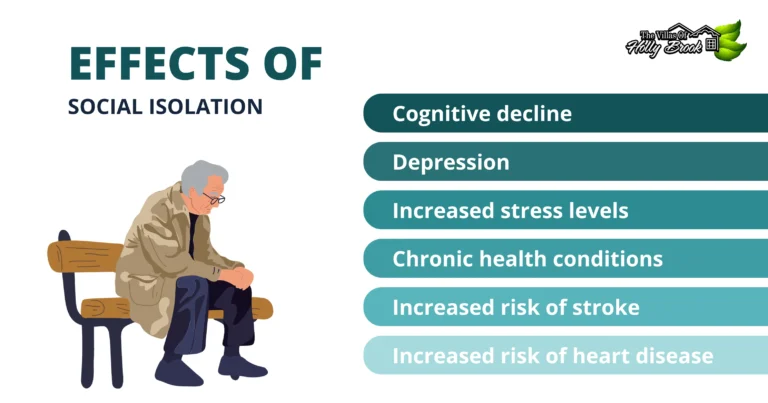
5. Memory Decline
When we start noticing our loved ones having a bit more trouble remembering things, it might be a signal that exploring senior living options is worth considering. Forgetfulness about daily tasks, names, or important events can be a natural part of aging, but when it becomes persistent and starts affecting their safety and well-being, it’s time to pay attention. Memory decline, whether it’s due to aging or conditions like Alzheimer’s, can be better managed in a supportive environment. Senior living communities, especially those with specialized memory care, are like safe havens designed for individuals facing these challenges. They’ve got trained staff, tailored programs, and activities to make sure our loved ones get the care and attention they need. It’s not just about ensuring their well-being but also providing peace of mind for the entire family. Senior communities can create a comfortable and secure space for seniors to navigate this phase of life.
Here at the Villas of Holly Brook, we take that commitment to supporting those with impaired memory a step further. Our Reflections Memory Care side is specifically dedicated to residents dealing with Alzheimer’s or related forms of dementia. In these environments, we’ve crafted a space that not only prioritizes safety but also focuses on creating a stimulating and engaging atmosphere. Our team understands the unique needs of individuals living with cognitive impairment, and that’s why we incorporate a variety of cognitive-enhancing activities into daily routines. From memory-centered games to sensory activities, we aim to keep minds active and engaged. Our indoor common areas feature outdoor elements designed to stimulate cognitive attention, providing a serene yet stimulating environment for our residents. It’s all about ensuring that each day is filled with meaningful moments and enriching experiences, ensuring our residents still feel a part of the community.
6. Caregiver Burnout
Caregiver burnout can be a strong sign that it’s time to consider transitioning to senior living for both the well-being of the caregiver and the loved-one receiving care. When caregivers experience exhaustion, stress, and emotional fatigue from the often demanding responsibilities of providing constant care, it can significantly impact the quality of care they provide. Recognizing the signs of burnout, such as increased irritability, persistent fatigue, or a decline in physical and mental health, is crucial.
Transitioning to a senior living community can offer relief by providing professional care and support tailored to the individual’s needs, thus alleviating the burden on the caregiver. Senior living communities offer a safe and structured environment where trained staff can address the specific requirements of the senior, allowing family members to focus on maintaining a supportive and loving relationship rather than being overwhelmed by caregiving responsibilities. Making this transition can contribute to the overall well-being of both the caregiver and the senior, ensuring that quality care is sustained without compromising the caregiver’s health and peace of mind.
Ready to start the process?
If you’ve started to pick up on any of these signs and find yourself considering the next steps for senior care, you’re not alone in navigating this important decision. We understand that these moments can be both thoughtful and sometimes a bit overwhelming. That’s why we’re here, ready to offer guidance and support tailored to your unique needs and concerns. Whether you have specific questions about the services we provide, want more information about the community, or are simply looking for some reassurance, we encourage you to reach out. Our dedicated team is available to provide the information you need to make informed decisions about the well-being of your loved one.
Schedule a tour for an opportunity to see firsthand the environment and care we offer. During the tour, we can discuss your loved one’s individual needs, showcase the amenities, and introduce you to our active community. We understand the importance of finding the right fit for your family, and we’d be honored to assist you on this journey.



